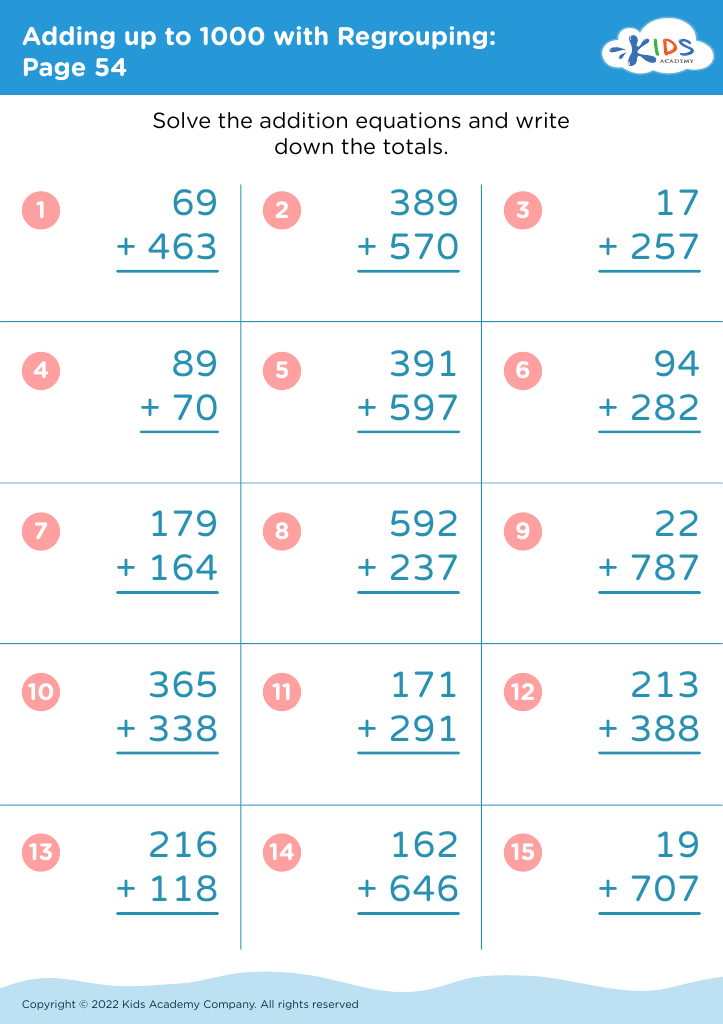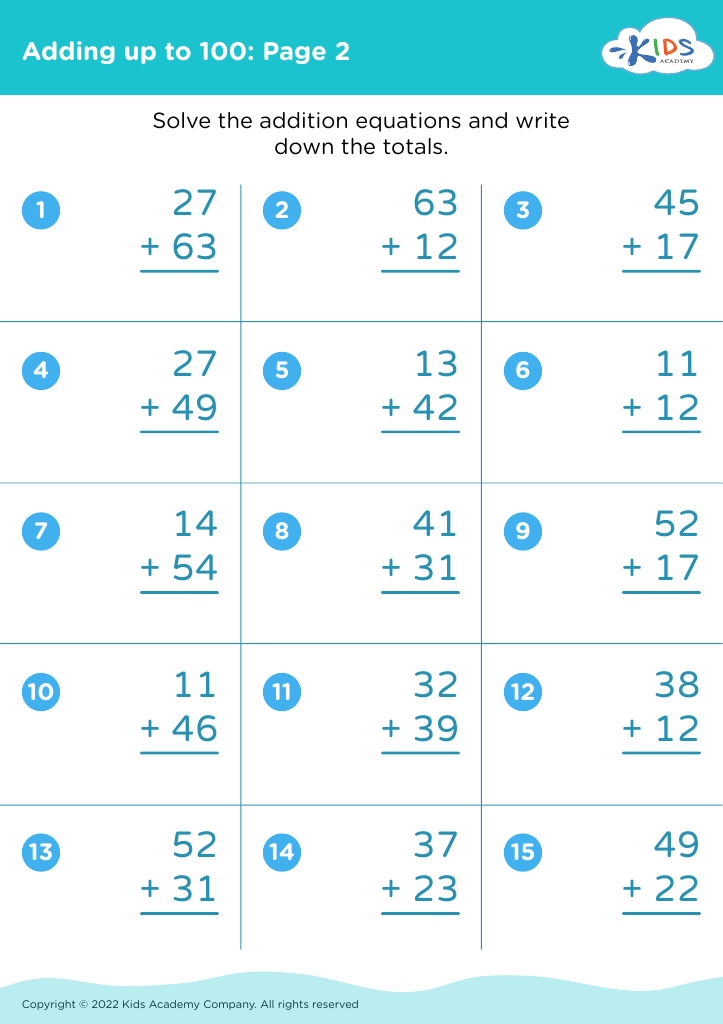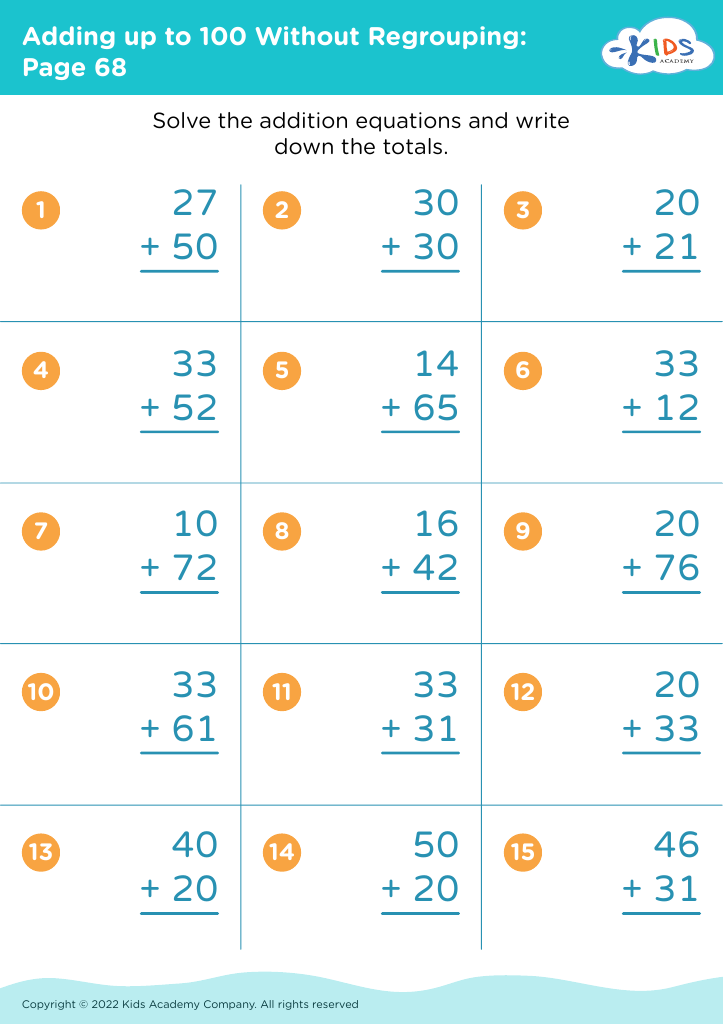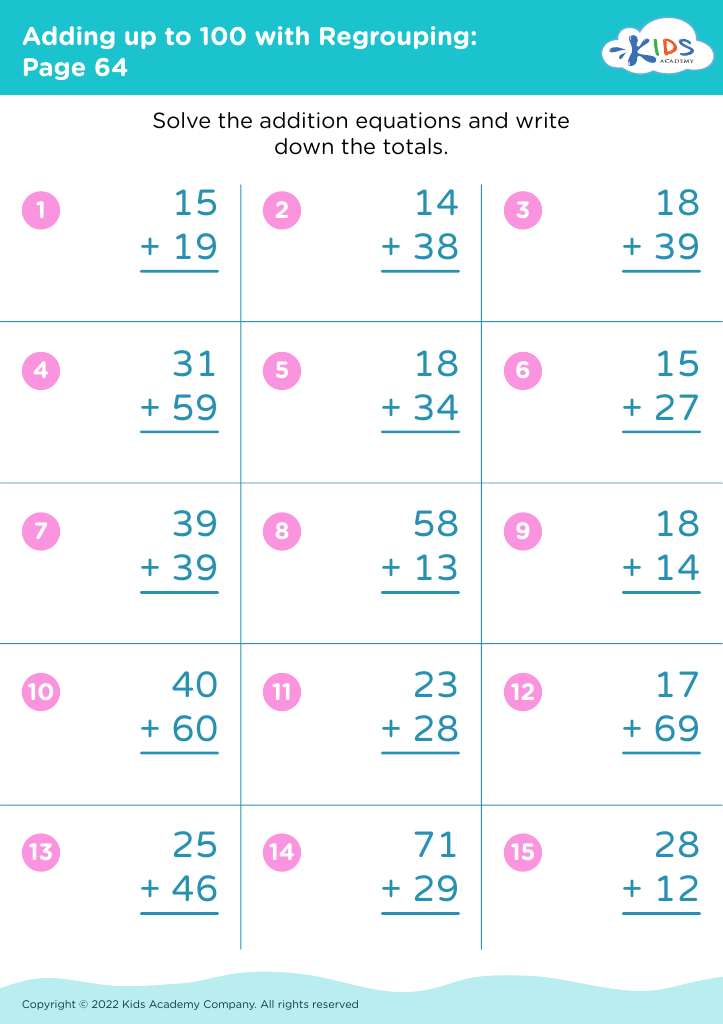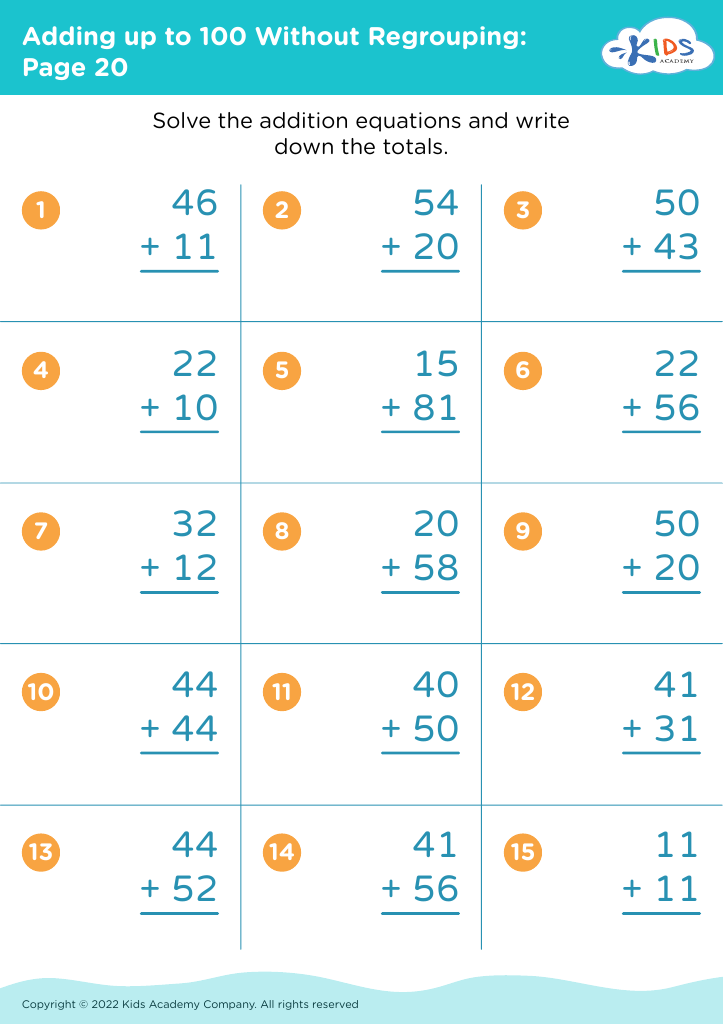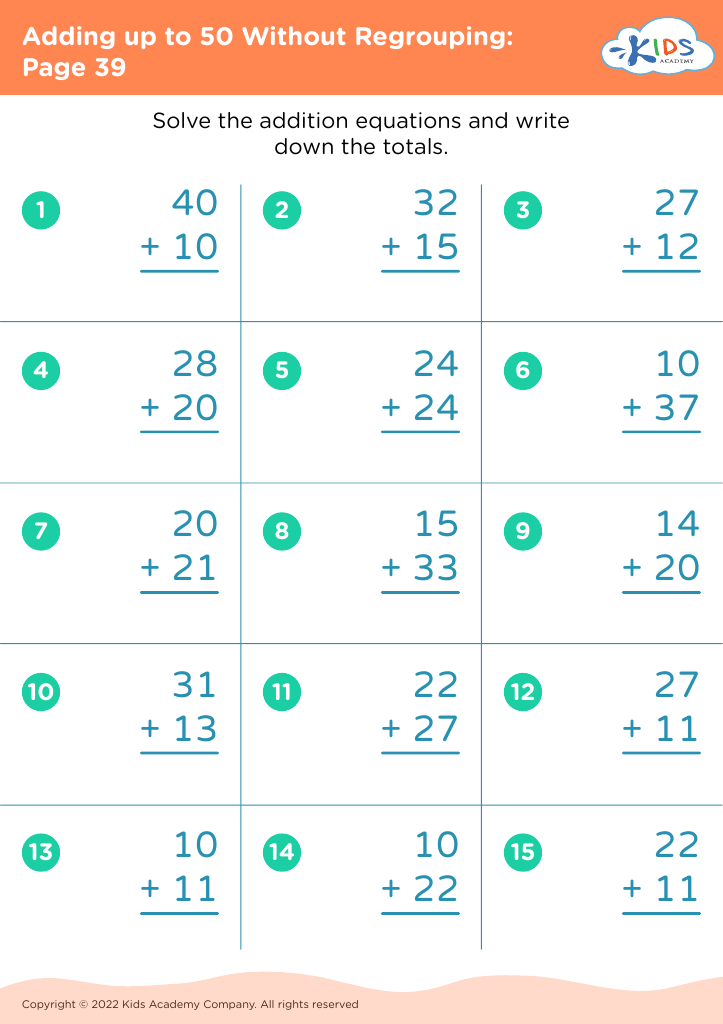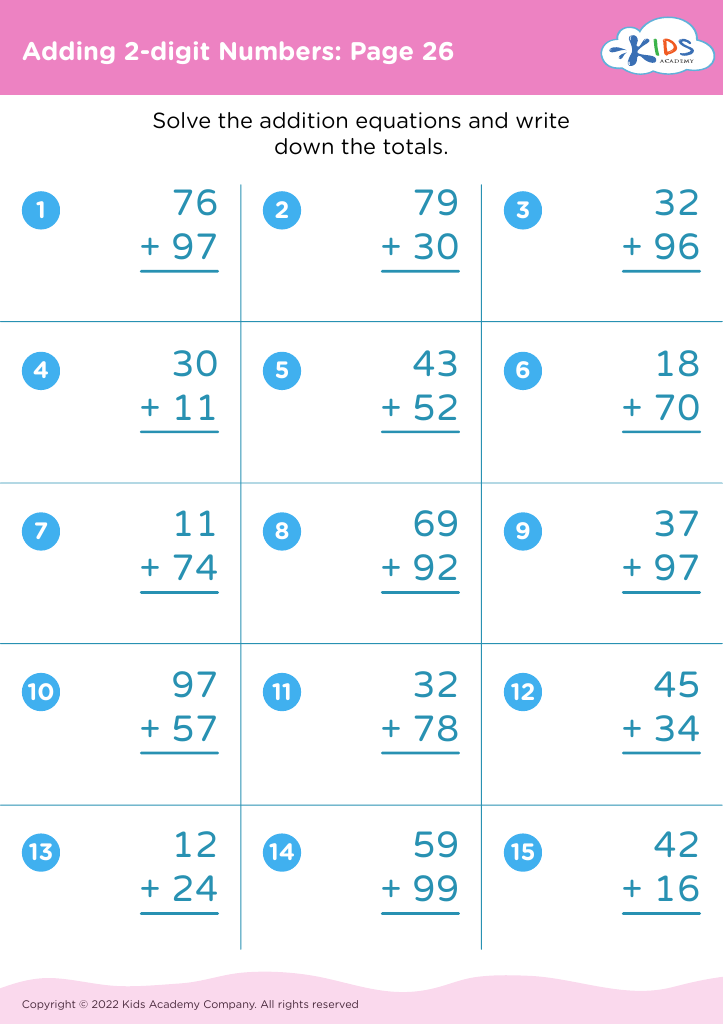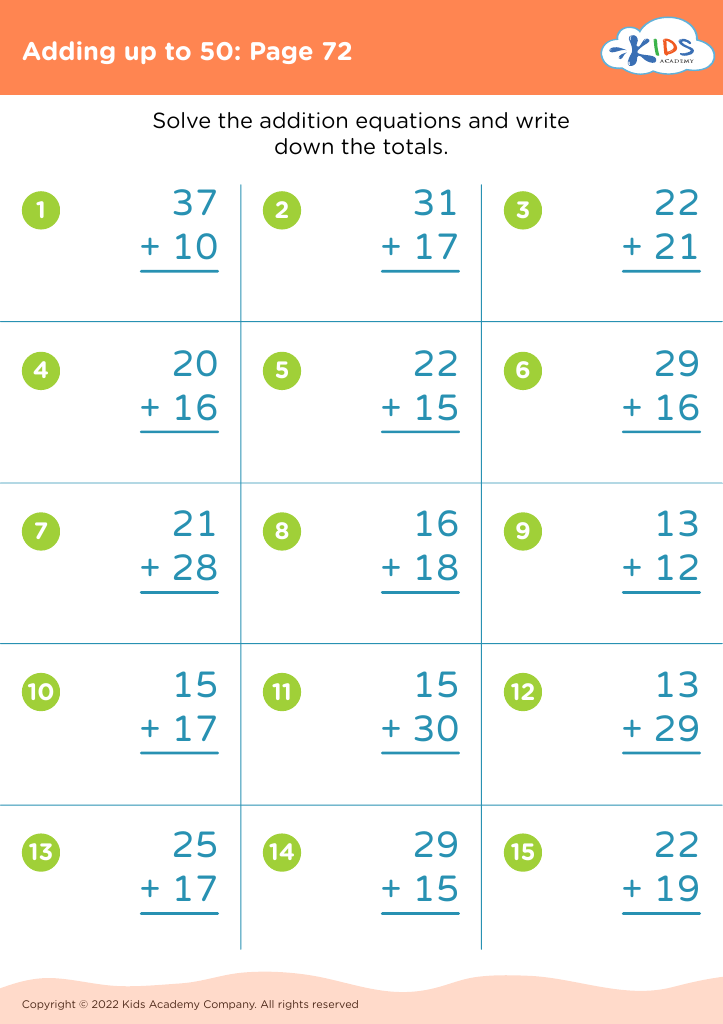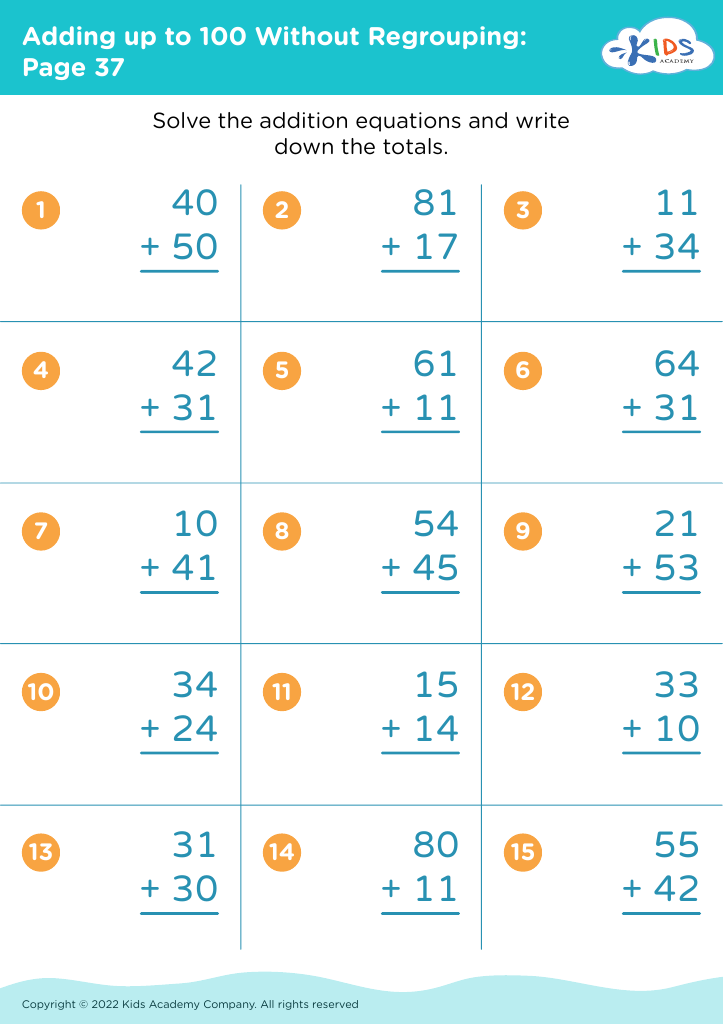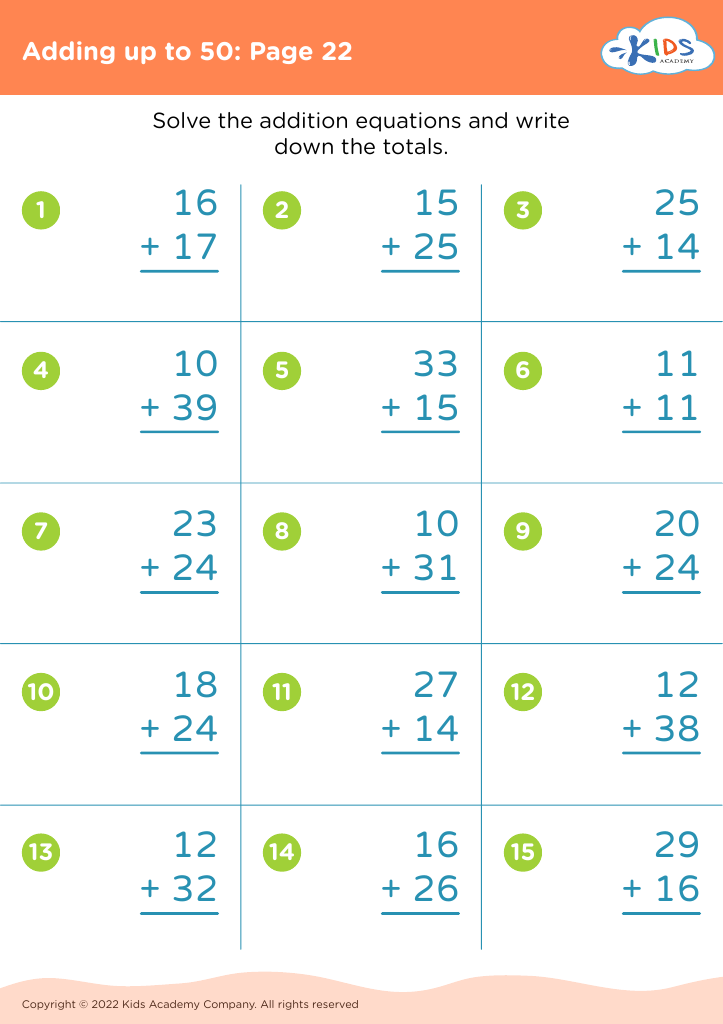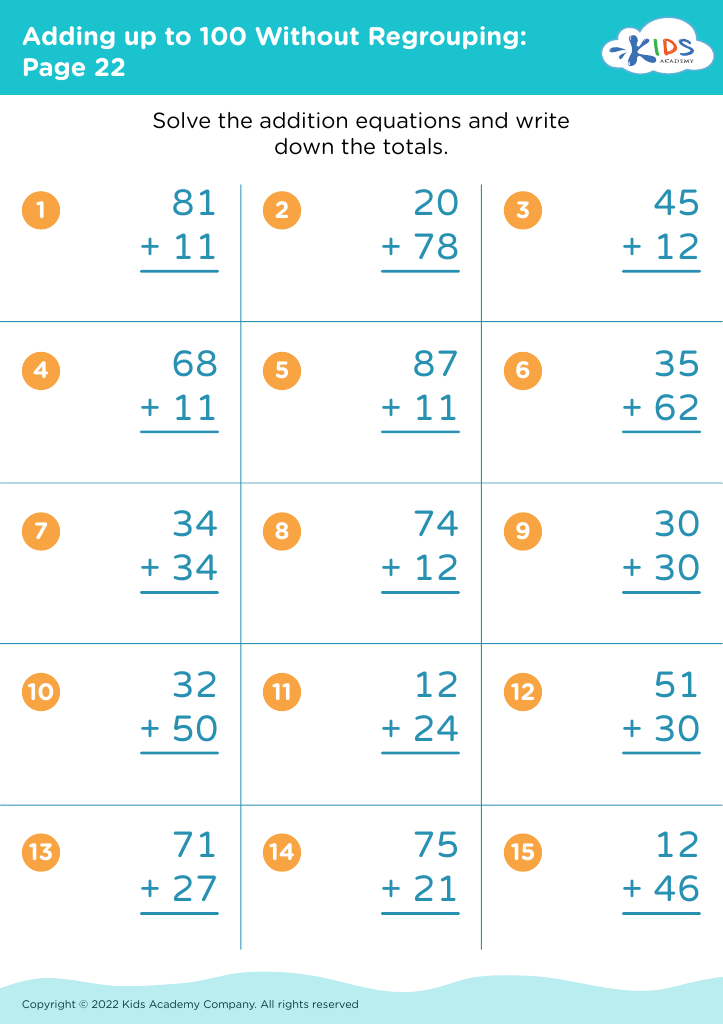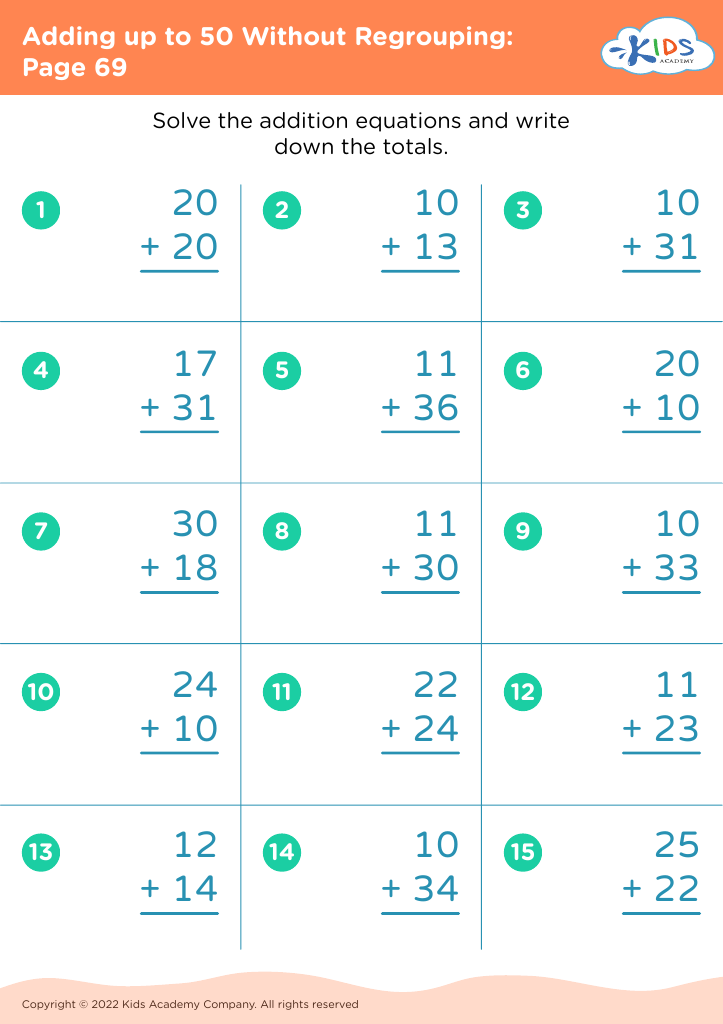Understanding multiplication Math Worksheets for Ages 6-9
31 filtered results
-
From - To
Discover the engaging "Understanding Multiplication" math worksheets designed specifically for children aged 6 to 9. These worksheets provide a fun and interactive way for young learners to grasp the concept of multiplication through colorful visuals, relatable examples, and a variety of exercises. Each resource helps build a solid foundation in multiplication while enhancing problem-solving skills and critical thinking. Ideal for both classroom and at-home learning, these worksheets encourage a positive attitude towards math, making it accessible and enjoyable. Perfect for teachers and parents alike, this resource will help children overcome math fears and gain confidence in their abilities!


Matching and Sorting for Kindergarten: Assessment 3 Worksheet
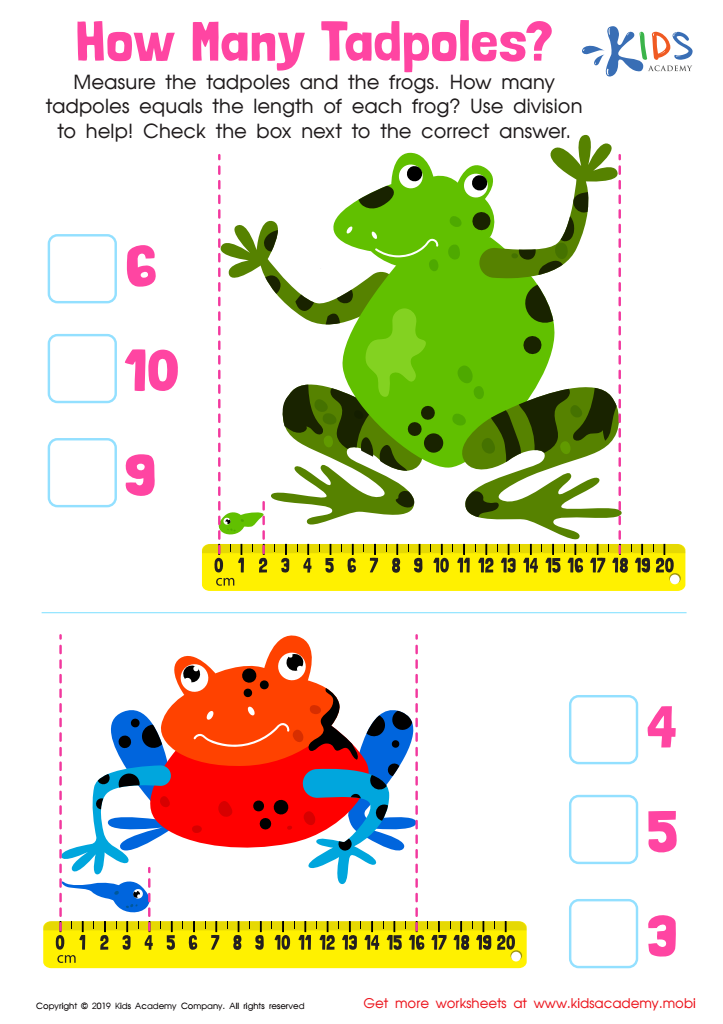

How Many Tadpoles Worksheet
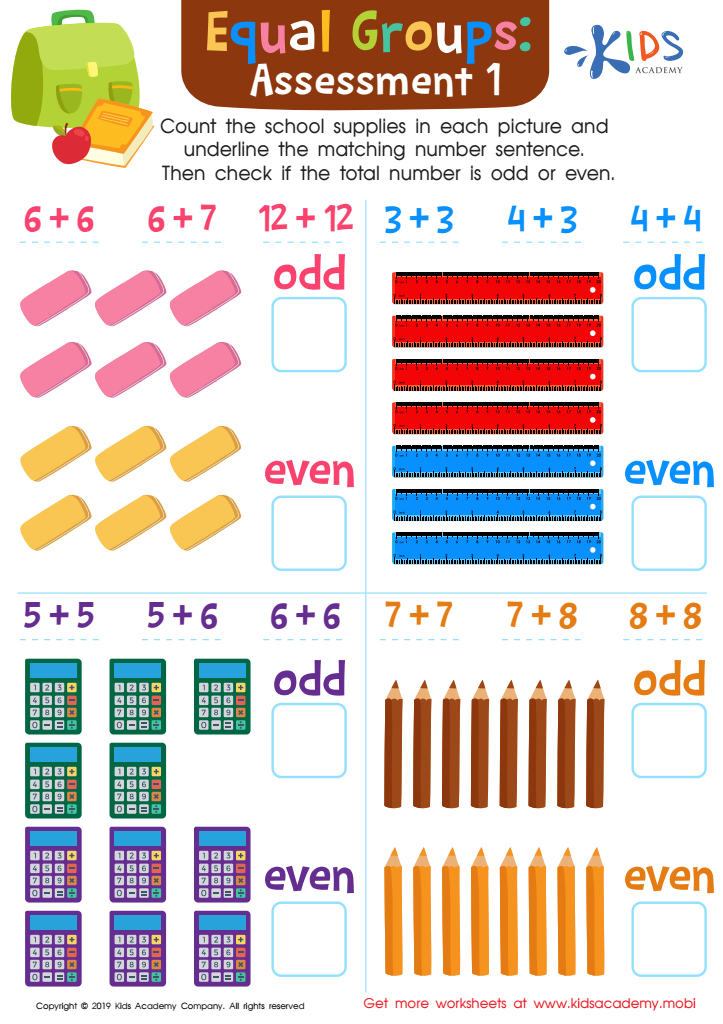

Equal Groups: Assessment 1 Worksheet
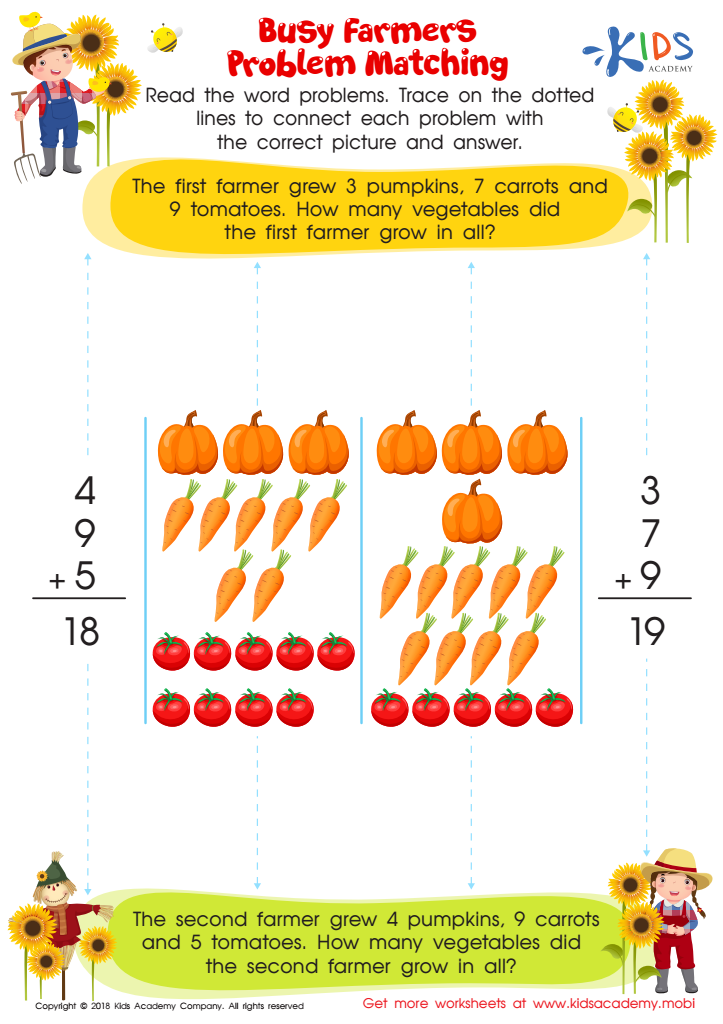

Busy Farmers: Problem Matching Worksheet
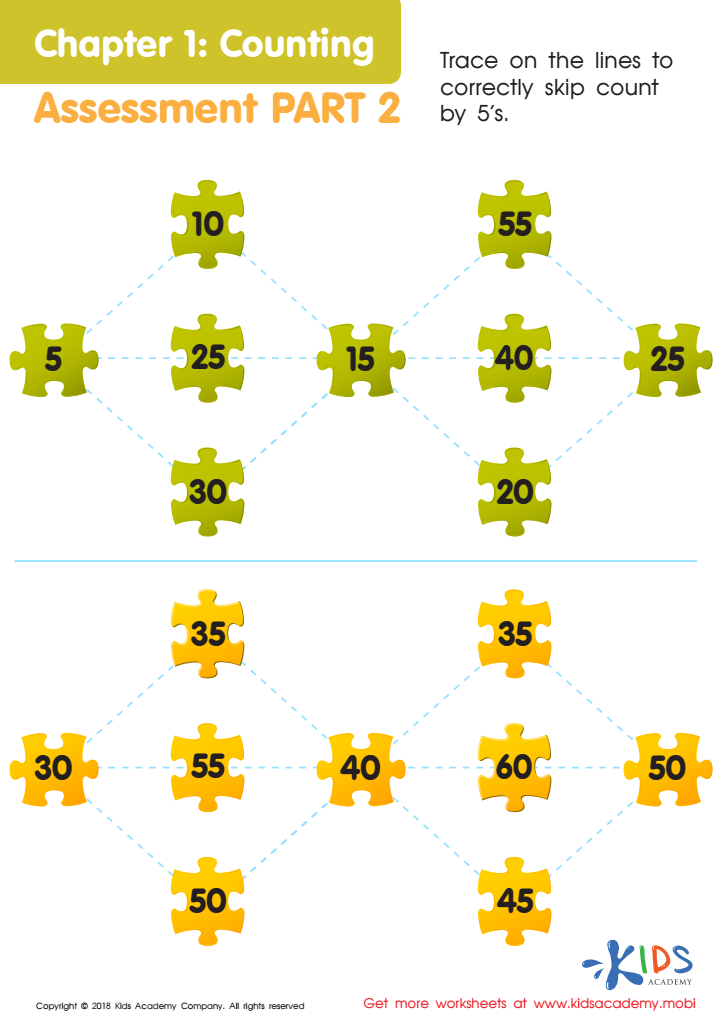

Counting: Assessment 2 Worksheet
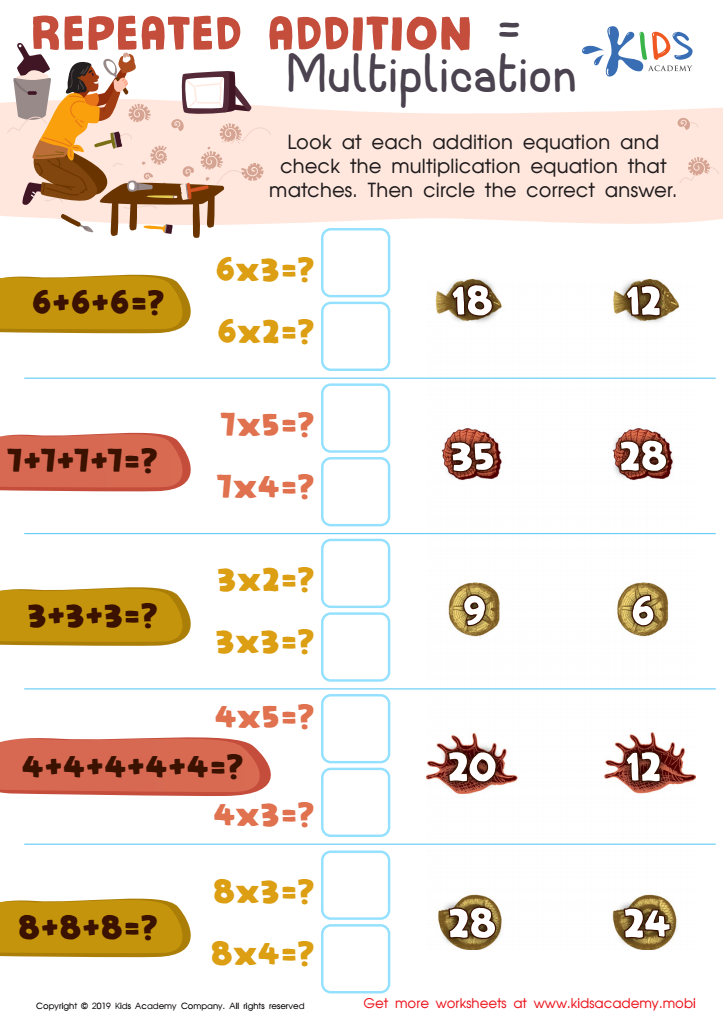

Repeated Addition = Multiplication Worksheet
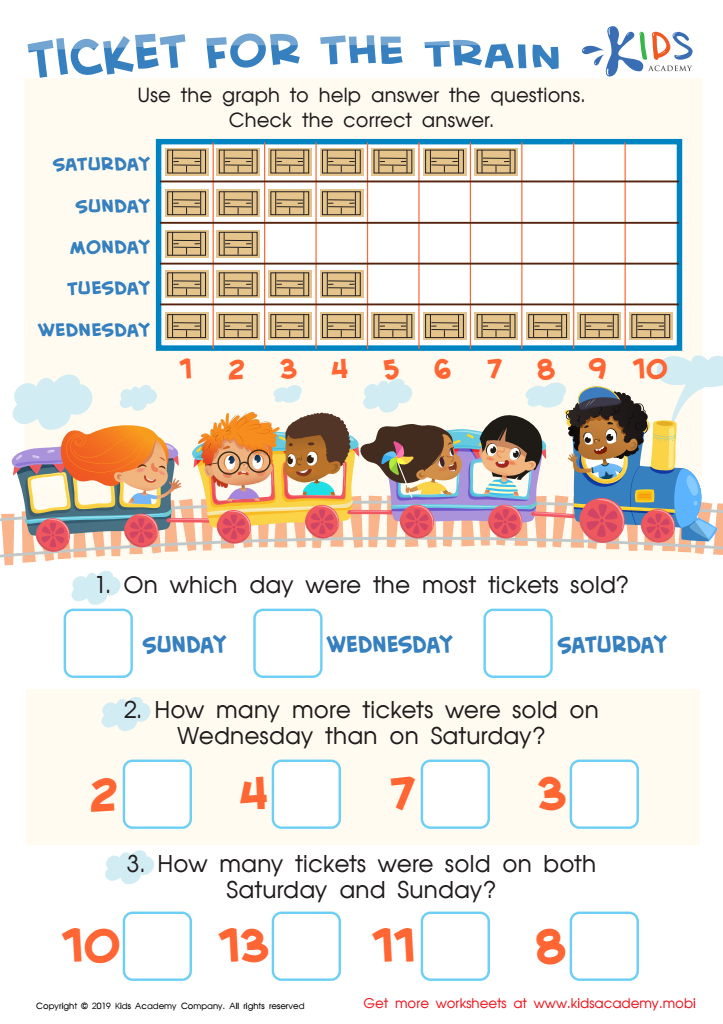

Ticket for the Train Worksheet
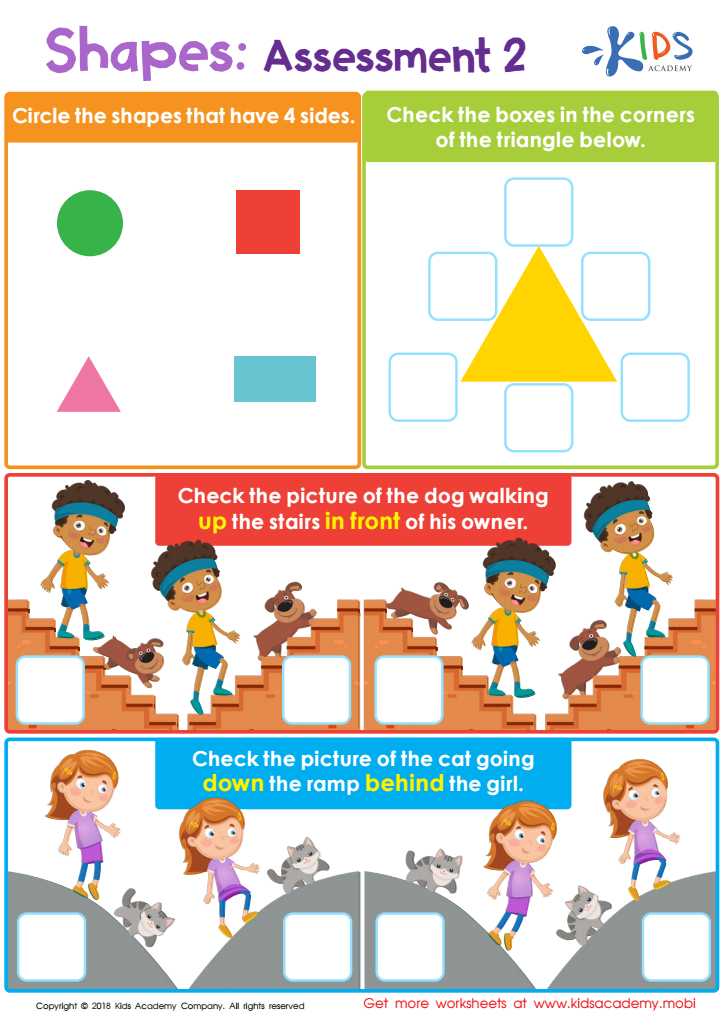

Shapes: Assessment 2 Worksheet
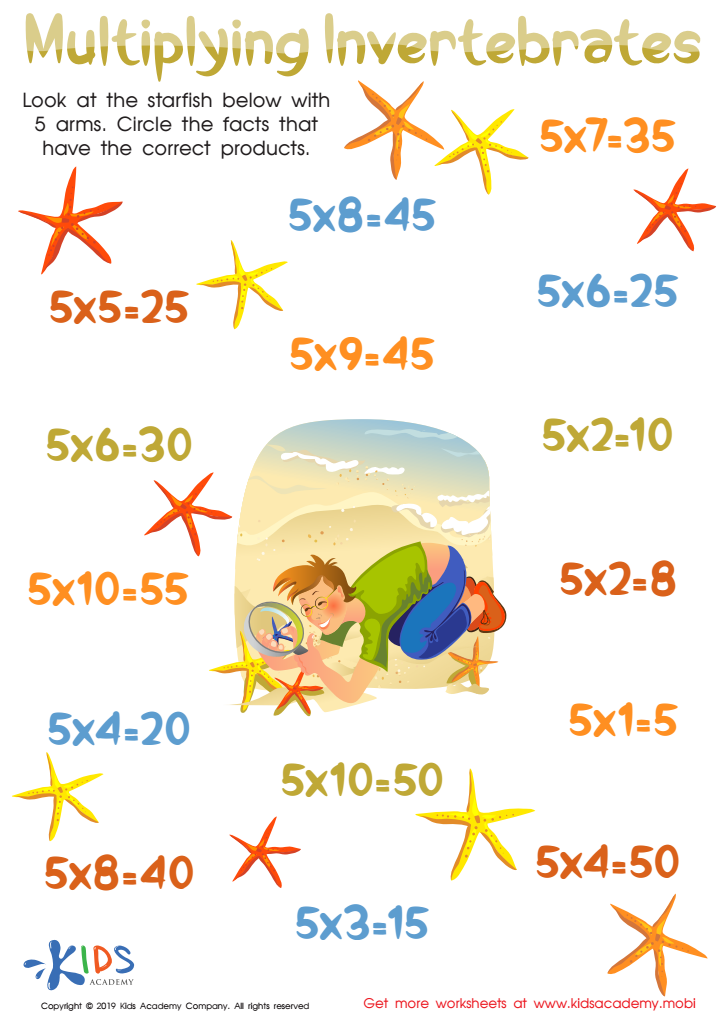

Multiplying Invertebrates Worksheet
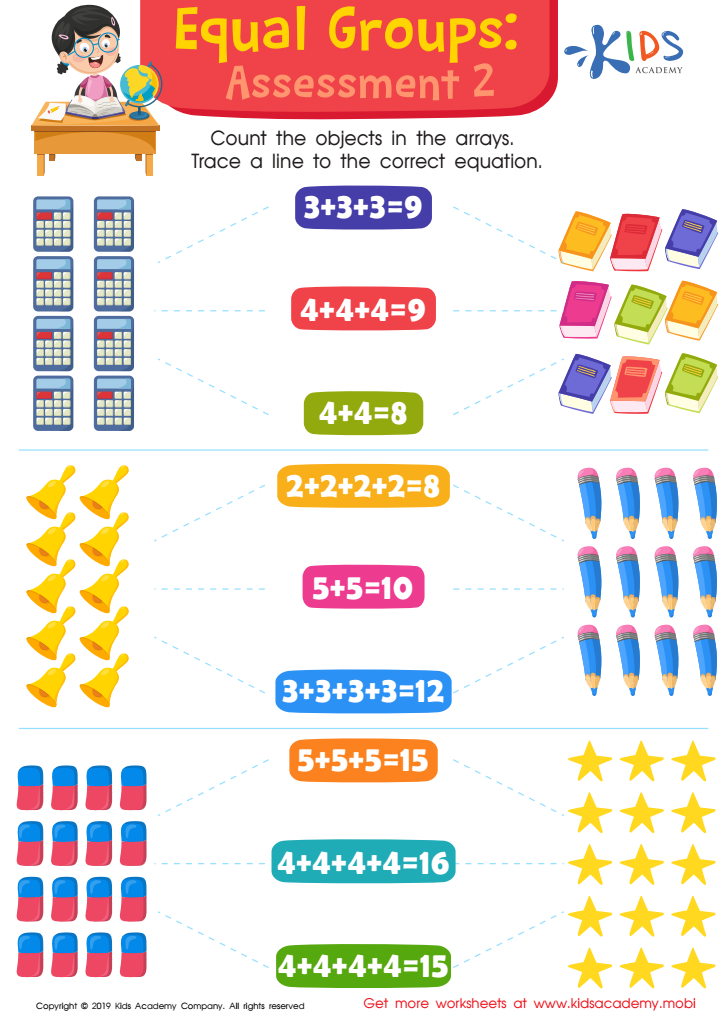

Equal Groups: Assessment 2 Worksheet
Understanding multiplication is crucial for children ages 6 to 9 as it forms a foundational skill that influences their future academic success. During this developmental stage, children transition from concrete arithmetic—such as addition and subtraction—to more complex mathematical concepts. Learning multiplication equips them with essential mathematical reasoning capabilities that are vital for problem-solving in everyday life and future mathematics courses.
By grasping multiplication, children begin to see relationships between numbers, paving the way for a deeper understanding of division, fractions, and even algebra later on. Moreover, mastering multiplication fosters confidence in their math skills, reducing math anxiety and encouraging a positive attitude towards the subject.
Parents and teachers play a pivotal role in this critical learning stage. Engaging children in fun and interactive multiplication activities can reinforce their understanding and retention of the concept. Whether through games, visual aids, or real-life multiplication scenarios, active involvement makes learning enjoyable and impactful. By prioritizing multiplication learning, adults help children build a robust mathematical foundation, preparing them not just for standardized testing but for real-world applications and lifelong learning. Supporting children's exploration of multiplication ultimately equips them with skills that extend far beyond the classroom.
 Assign to My Students
Assign to My Students

